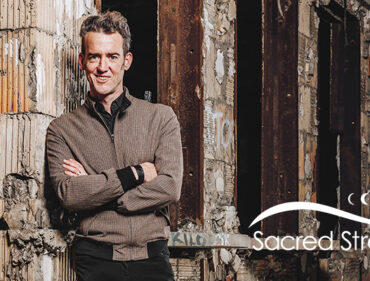Article: Opening the Doors to the Self – Habits
By Isa Gucciardi, Ph.D.
Summary: Depth Hypnosis can be used to reveal the unconscious motivations or triggers behind habits and offer healing at the root.
Given the few opportunities to experience ourselves authentically at a soul level in most modern Western cultures, where are we to find an opening to the pathways to the sacred experience of ourselves? The doorways which hypnosis opens for us to begin the journey to the experience of ourselves at a soul level are numerous. They are most often found in unexpected places: in “bad” habits, phobias, panic, compulsive or imbalanced behaviors, and even physical pain. The pain and fear that these phenomenon medicate are all connected with the shadow, whose manifestations the dominant culture tries so hard to control. But in its need to be known and recognized and re-experienced as part of our connection with ourselves, the shadow exerts itself. Fear and pain are, after all, part of our experience of ourselves and cannot be repressed or denied indefinitely. The principal way the shadow shows itself within the domain of the dominant culture is through the symptoms of dysfunction and the pain those symptoms cause.
Some of the most evident of these symptoms are “bad” habits. Many of us never permit ourselves to encounter the meaning behind our habits. We may only notice that we smoke constantly, or that we can’t focus on anything for more than a minute or two at a time, or that we eat compulsively. And we are lucky if we notice this much about ourselves; we are more aware than those who never notice or acknowledge that they engage in compulsive or self-limiting behavior. For those who do notice how habits limit them, the hypnotherapist’s office is one step on the path to understanding and changing the habit.
Most hypnotherapists do not take advantage of the wonderful opportunity for self exploration the desire to stop smoking provides. And indeed, many clients are not interested in exploring that opportunity. We may want to remain unconscious. We may only go so far as to seek an externally-generated hypnotic suggestion in an attempt to govern our behavior without understanding it. For those who do not wish conscious contact with motivation, traditional hypnotic techniques can be effective.
A traditional hypnotic approach to smoking cessation might involve the following steps: A relaxation induction where suggestions are given to relax each muscle group, then a visualization to relax the mind; once the subject is hypnotized, the suggestions might fall into the following pattern:
“And as you are feeling relaxed like this you find you no longer need the cigarettes, and each time you wish to smoke you will remember the way you feel now and realize that you don’t need the cigarette to feel relaxed. And each time you want a cigarette, you will remember that you no longer need the cigarette and you will feel so much better without the cigarette because you feel so good about yourself because you are now stopping the habit of smoking and it feels so good to stop smoking that you realize you no longer want cigarettes because smoking no longer makes you feel good and every day in every way you will find that the cigarettes no longer fill any role in your life because you are now becoming a non-smoker and you feel relaxed and in control because you are now becoming a non-smoker and because you are a non-smoker you feel relaxed….”
This series of suggestions might be effective over the short term for many people. It is possible to reprogram the unconscious, at least temporarily, while remaining unconscious to the causes of the original programming. Again, it is important to emphasize that this process must be agreed to by the client and be in harmony with his goals and desires.
For those who do wish to explore their unconscious motivation, the habit of smoking can be the door to the deeper understanding of the self and the desire to stop smoking the doorknob. In my practice I have found that the habits clients wish to rid themselves of are generally medicating a repressed or forgotten trauma to which the ego defenses do not allow access. The reason unconscious programming with traditional hypnotic suggestion often does not remain effective over time is because the charge around the trauma usually remains unchanged with this approach. Although spontaneous dissolution of the charge can and does occur with traditional hypnotic suggestion, the charge can take on new life upon contact with an unconscious trigger. This trigger may remain unrecognized by the conscious mind, and this is when we see old habits resurfacing.
Mary Ann’s case is an example of how an old habit can resurface due to a trigger which is not recognized consciously because the root of the habit remains unconscious. She came to me because she had recently started biting her nails again. She had been to a hypnotherapist who had provided her with traditional hypnotic suggestions two years before. She had quit biting her nails after several sessions. She could not understand why she had started again.
Through a series of questions, asked while she was in trance, and which started with the habit and led to its cause, she recognized that she bit her nails whenever she felt insecure or afraid. Although she had been biting her nails most of her life, she had never made that connection. Through another series of questions beginning with fear, she found that what she feared most was her mother’s scorn.
She had recently lost her prestigious job and she realized that the worst part about losing the job was that her mother would have a reason to begin harping on her and scorning her. So she had started biting her nails. This was the same response she had always had to the effect of her mother’s scorn. By returning to some of the original situations where her mother had been scorning her through words and deeds, she was able to shift her relationship to the scorn, to her self-esteem, and to her ability to trust rather than fear herself. Therefore, when she found herself in a situation, like losing a job, which brought up insecurity, the insecurity became a trigger to her new-found sense of self-esteem and self trust rather than a trigger to fear of her mother’s scorn. She stopped biting her nails permanently, and she reclaimed a part of herself which had been lost to the previously-unrecognized yet devastating effects of her mother’s scorn.
This approach required her to feel the pain of that devastation, but feeling pain is the only way we can shift our relationship to it. We cannot transform what we do not know is there. Many of us would rather remain within the framework of traditional hypnotic suggestion because it is less challenging and allows us to remain more passive in our approach to change. Somehow it seems safer not to confront the root causes of our habits, but this safety is an illusion. As long as we allow anything at all to come between the aspects of our conscious waking self and our experience of ourselves at a soul-level, we will never really be safe. We will always be affected by the pain, fear, disorientation, and confusion even if we do not acknowledge its source.
Naturally, we must feel that we are in safe hands before allowing the exploration of the long-avoided issues which are at the bottom of the habit or symptom. The relationship with the hypnotherapist must be one of honest rapport, which can take more time to develop than a quick stop at an external-suggestion hypnotherapist. Also, the hypnotherapist practicing this type of hypnotherapy, rather than simple external suggestion, must be able to be present for pain (their own as well as the client’s) in a way that the professional who practices the latter type of hypnosis need not be. This is why many hypnotherapists are willing to remain in the domain of external suggestion and why hypnotherapy as a secular sacrament is just now being seriously explored both by professional hypnotists and by the wider psychotherapeutic culture.
It takes a lot of courage to step outside of the culturally-accepted mores and submit ourselves to the as-yet-unknown self. It is important to remember that pain of the rediscovery of the trauma behind habit is mitigated by positive change the release from its compulsions provides. Many people who came to me for simple habit control have used the opening provided by the initial exploration of the self through the crystallizations of the habit as an entryway to the self at a soul level. After the initial issue is resolved, they return for more intentional explorations of their relationship with their inner life. One client described their experience of this exploration by remarking, “I have learned about inner landscapes I never even knew existed.”
The experience of the self beyond the level of the personality which contains the habit takes many forms: an encounter with the individual’s idea of God in the form of light, unearthly music or sound, the appearance of angels, or beings of light, or simply in the experience of subtle vibrations encountered in deep meditation. All of these experiences (and more) are part of the journey one can undertake by deciding to stop biting one’s fingernails or stop compulsive eating.
The form these explorations take draw on elements of spiritual experiences common to many different cultures. The hypnotic induction containing instructions to relax and release tensions from the body and mind serves the same purpose as the incantation a shaman uses to establish a relationship with the patient in some traditional cultures’ healing rites. The client may find the presence of a totem animal or spirit who presents itself as a guide to the inner world which parallel the experience of shamanic or mystical encounters in other contexts. The client’s dreams may deliver messages which the conscious mind is unable to hear as Carl Jung reports in his book, Dreams. Experiences of past life memories may illuminate the current life’s symptoms or difficulties as reported in Brian Weiss’ book, Many Lives, Many Masters. Equally powerful in the release of one’s blocks to the experience of the sacred is the inner child work so cogently outlined by John Bradshaw in his series of books on the family.
The following is a reconstructed transcript of a training hypnotherapy session with a client I will call Cathy, which demonstrates the encounter with a previously unrecognized part of the self, and points to an experience of the sacred. This example is also a clear demonstration of the power latent in a dysfunctional habit.
T. What would you like to do?
C. I would like to manage my time. I need to be more focused.
T. You want to be more focused. And what stops you from being focused?
C. Handling a lot of stuff from the outer world. I allow myself to become confused.
T. You allow yourself to be confused. How long do you remember having this pattern of allowing yourself to be confused?
C. Well, really quite a long time.
T. When is the first time you can remember that happening?
C. At one point in my life it worked to handle a lot of things at once, but now it has become uncomfortable.
T. When you say it worked, in what sense did it work?
C. It created a lot of activity, a lot of contacts. Creative pursuits do come out of being sort of all over the place.
T. And what does it cause now?
C. Now it just makes me feel confused and scattered.
T. And when you’re scattered, what effect does that have on your life?
C. It’s kind of unnerving.
T. Are there particular times of the day when you feel more scattered?
C. I think probably early, from about six to noon.
T. Does anything trigger your feeling scattered at that point?
C. It’s something happening inside rather than externally.
T. Would you be willing to explore what that is?
C. Yeah.
T. So just get comfortable.
Take some deep breaths and just feel yourself releasing the tension out of your body, letting yourself become open, your mind clear. And visualize yourself entering the movie theater that is going to show you a movie, a kind of a documentary about your life. And the scene that’s going to be on the screen when it comes on in a moment is going to be the scene that shows you the event when you originally chose this method of scattering your mind. It will show you why you chose that, what it was meant to achieve. On the count of three that scene will play, and I’d like you to just say everything that you see on the screen. Here we go. One, two, three. What do you see?
C. Well, I’m riding my bicycle and I see absolutely everything. I can see the spiders, the grass, the sky, the different clouds, the bushes, the different flowers. I just see everything.
T. You can see clearly.
C. And all at the same time.
T. Does that scatter you, seeing too much at once?
C. I think it scatters me but I don’t want to focus. I like the experience.
T. What is it achieving for you?
C. Freedom.
T. Freedom from what?
C. Structure, discipline, chores, rules.
T. Let’s go back to an earlier moment when you had those things: structure, discipline, rules, a scene of importance that shows you the impact of that on your deciding you don’t like that. What do you see?
C. It’s just generally everything.
T. Who is imposing the structure and the rules?
C. My father.
T. And how are you feeling when he’s doing that?
C. Like I’d better do it.
T. What happens if you don’t?
C. Anger.
T. You get his anger. So what do you decide about that?
C. I’d rather be riding my bicycle.
T. How do you feel about his anger?
C. It makes me feel lonely.
T. So what do you do with that loneliness?
C. Just keep riding. Be in touch with everything.
T. And how does the being scattered help you deal with the loneliness?
C. It dissipates it.
T. So as you look at that now, is the scattering still somehow helping you deal with that?
C. I think so.
T. Yet at the same time, you needed to avoid the structure of your father’s environment. So I’d like you to let the creative part of you come up with other ways of dealing with those issues other than scattering yourself. I’d like you to see that young girl that you were. How old were you when you were riding your bicycle?
C. Seven or eight.
T. I’d like you to see yourself as you are when you’re seven or eight years old. What do you think of that girl? Do you like her? Could you tell her that? How would that feel to say it out loud?
C. I don’t know if I could say it.
T. Do you see yourself, as you are now, as an adult, going to give her a hug? Look her in the eyes and just let her know that you’ll be there for her. She doesn’t have to be lonely anymore. You might let her know that you don’t require any structure or rules. You’re not like your father. You don’t require her to do anything or be any certain way. She can be free with you, totally free without having to scatter her mind. Ask her if it would be okay for her to do something else besides scatter herself, something that might make herself feel even better and more free. Be that seven-year-old self. How do you feel now you know that big Cathy is loving you?
C. Not sure.
T. What are you not sure about?
C. Being serene, being connected to God.
T. Why did big Cathy lose that?
C. Well, she hasn’t really, but she has a lot of other things to do.
T. Maybe she needs you to teach her that again and remind her. Could you do that? And being calm, how does it feel to be calm versus being scattered?
C. Good.
T. So would it be okay to choose to be calm, and teach big Cathy how to be calm? Would it be okay to teach her from six to twelve in the morning to be calm? You can help her be more focused on what you really want. Would it be okay? All right. Now, big Cathy, how do you feel about that? Are you okay to let your inner child teach you again about serenity? I’m going to ask you inside to really feel and monitor your response to this. Is there any part of you that objects to this new way of being? I’d like you to see yourself then tomorrow, or some time in the future, as soon as you’re ready, being this new way – calm, focused, unscattered, very present, also very free. Feel that serenity in your body now and I’d like to know if there’s a word or a phrase or a sentence that would somehow sum up this feeling of serenity, freedom from being scattered. Give yourself a word or phrase.
C. Joy.
T. So would it be okay to use the word ‘joy’ and say it to yourself to bring back all of these feelings: serene, calm, centered, focused, free? And then whenever you say this word to yourself, it will bring you back to this state instantly. As you say that word to yourself it will bring you back to this state, because this is your natural condition, free, and serene. When you’re ready now just bring yourself back into the waking state. Your inner self will do that. You’ll open your eyes when you’re ready and that will be a sign that you’ve integrated what you have learned here today. When your eyes open you’ll be wide awake. Great. Just take as much time as you need. How do you feel?
C. It was wonderful really. I hope it will work.
This shows how hypnosis can release power held within dysfunction so the individual can use it as a pathway to his inner life. This is more helpful rather than seeking a band-aid to soothe the symptom and ignore the cause of distress. Instead of exploring the root cause of the scattering, the therapist might have just provided external suggestions such as:
“Now when you are feeling scattered, you will repeat the word, “joy” and it will bring you to a calm, serene place. And you will find that you will be able to focus with more ease. You will find that every time you repeat the word “joy”, you will find that you focus more easily and even now you are feeling less scattered and feeling more focused and this sense of focus will stay with you even as you open your eyes.”
This approach can be effective as well, but from a purely behavioral point of view. The suggestion is from without; it is someone else’s reality. It does not necessarily contain resonances with the inner psychic life history of the client. It may even go counter to the client’s inner reality. If they cannot experience joy when they tell themselves to because they do not understand the nature of their imbalance, they may make adaptations to the suggestions which are not helpful. I have seen the effect of this problem in working with people who were raised in churches where there was a belief that everything is fine the way it is, that everything is perfect, and to say otherwise is a sin. This type of mass external suggestion which has no resonance with the individual’s actual inner reality creates confusion and feelings of badness which are anything but therapeutic.
In any case, the client is not afforded the opportunity to explore the emotional charges behind the problem, so the charges remain within their unconscious experience. Worse, without exploring the emotional charge, there is no door to the self, and no possibility of the experience of the sacred encounter with the self. With this approach, the opportunity of using hypnosis as a secular sacrament is entirely lost.
The experience of working with a hypnotherapist whose intent is to help their client use their dysfunction as a doorway to the soul serves the same function as a priest or shaman in other cultural contexts. Ideally, all three understand the dynamics of transformation contained in the shift of one’s attention from the dominant conscious-mind cultural reality to the reality of the self at a soul level. Knowing that the practitioner has this understanding makes it much easier and safer for the client to launch into the uncharted, unfamiliar territory of the self. Once the client understands that the practitioner can help them create a container for the process of self transformation, the client can use the hypnotherapy session as an interactive meditation. They can then be guided to the encounter of the same energies that are encountered in deep prayer, meditation, and some chemically-altered states to affect a change in their relationship with his dysfunction. The advantage of using a secular sacrament for this encounter is that the individual is not beholden to any belief system or dependent on a drug for insight.
LIKE THIS ARTICLE? SIGN UP FOR FREE UPDATES!



